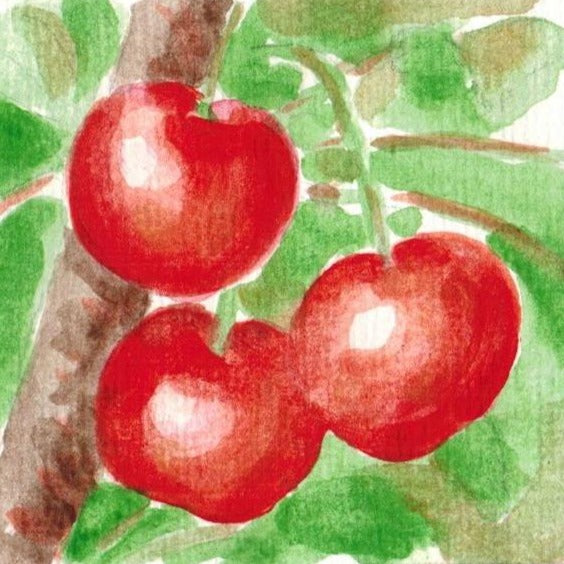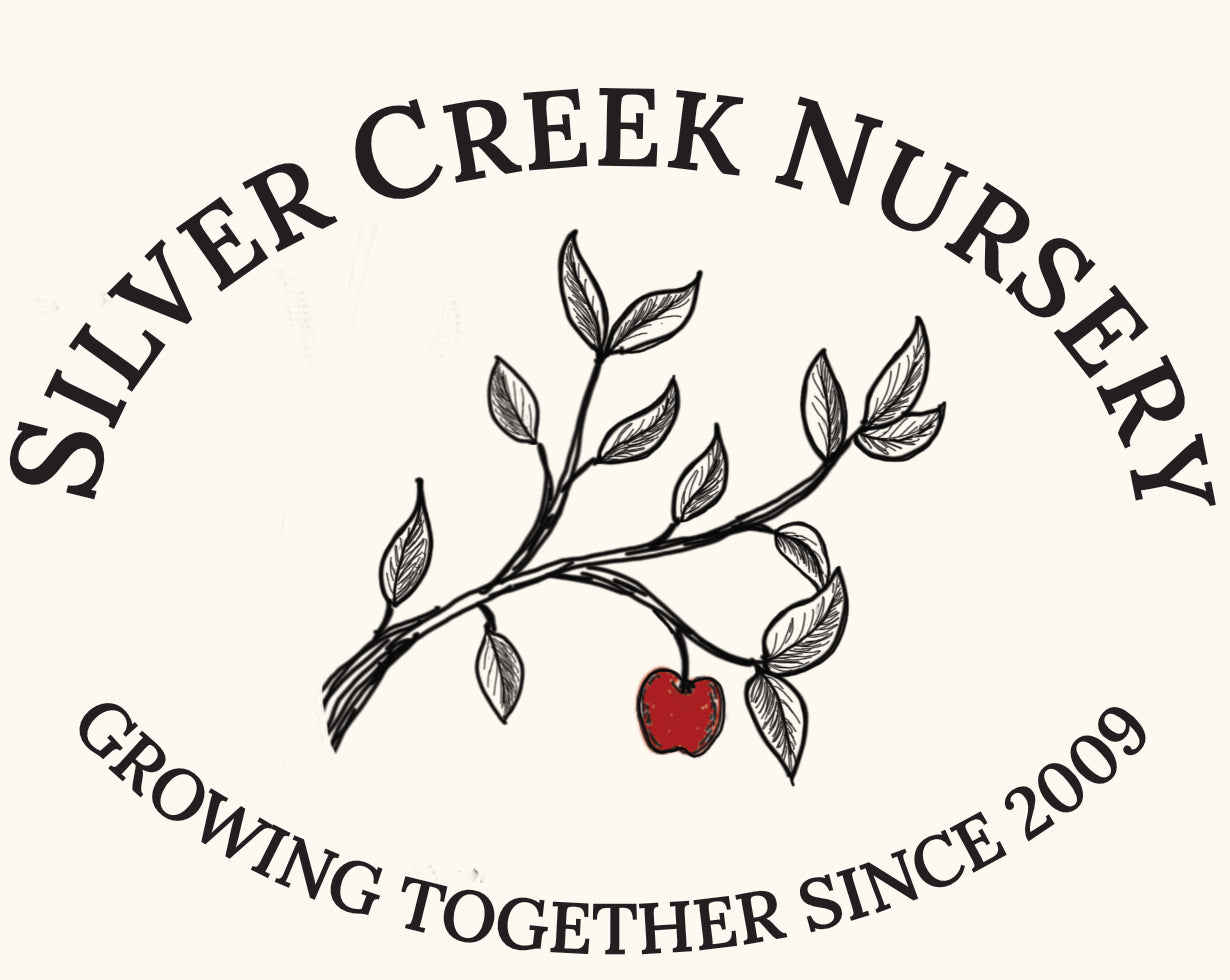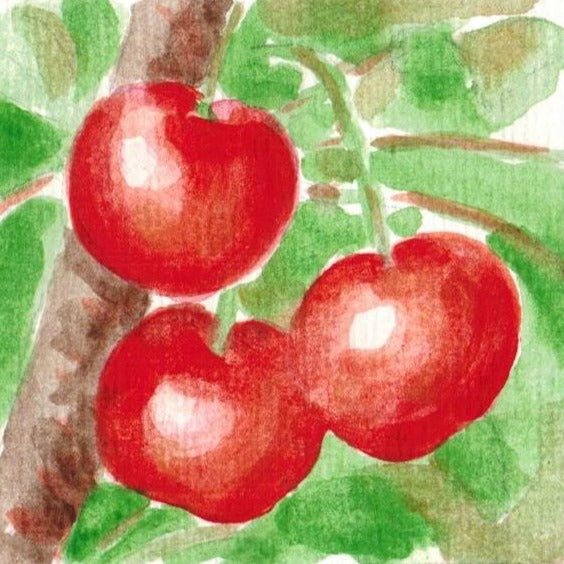Silver Creek Nursery Ltd.
Hungarian Grape Sour Cherry
Hungarian Grape Sour Cherry
History: Hungarian Grape originated in Hungary as the name suggests. They were grown commonly in the village of Ujfeherto, although it is unclear when they originated. After WW2 and the introduction of communism to Hungary, the goal was to select a variety suitable for fruit production on a larger scale. Breeders collected numerous varieties of cherries and Hungarian Grape was chosen as the best among them. Its Hungarian name reflects its heritage: Ujfehertoi Furtos, literally translated to "Bunched of Ujfeherto." They have become one of the most popular sour cherries in German speaking countries but are not well known in North America.
Why We Grow It: These are among the best tasting sour cherries out there. With a deep maroon-red colouring and rich juicy flesh, these cherries stand out. The flesh is aromatic, and their unique balance of tang and surprising sweetness makes them great for cooking and fresh eating. The tree is quite vigorous, bearing from both annual growth and spurs, and it is self-pollinating.
Fruit Specs
Fruit Specs
Recommended Use: Fresh eating, cooking
Fruit Size: Large
Storage: Keeps about a week in the fridge
Harvest: July - Mid
Growing Specs
Growing Specs
Canadian Hardiness Zone: 5
Soil Preference: Sandy loam, loam, clay loam. Prefers average to moist conditions with well-drained soils, avoid planting anywhere that floods for more than two weeks in the spring.
Flowering Time: Late
Bloom Colour: White
Pollination Requirements: Self-pollinating, this variety will produce fruit without a cherry tree of a different variety but will produce more and better fruit if one is present. Sweet and Sour cherries cannot be relied upon to pollinate each other.
Sun/Shade Requirements:
Full sun (approx. 8-10 hours of sun daily)
General Growth Habits:
Strongly vigorous with an upright and compact growth pattern.
Shipping vs. Pick Up
Shipping vs. Pick Up
CLICK HERE to see how shipping compares to pick up.
Shipping: Every year we ship thousands of trees across Canada (except BC due to CFIA regulations). We carefully bag roots in damp sawdust, then box them and send them out via courrier. CLICK HERE to see our shipping policy.
Pick-up: We also have thousands of trees picked up from our nursery each year. The pick-up options is free, though you must wait until you have been emailed a confirmation that your order is ready to pick up, which will have further information such as hours, locations, etc. We really appreciate if you can make an appointment to pick up, then we can be as organized as possible during our busy season.
Size at Purchase
Size at Purchase
Our grafted fruit trees are graded into three categories, and the size includes the rootstock:
- 50-80cm whip: may have some minor branching, this grade is like a "b-grade" size tree in industry standards; we include in this price category trees that are over 1m but have some scarring or mild crookedness.
- 1m+ whip: may have some minor branching, aka feathering. This is like a typical one-year whip in industry standards.
- 1m+ branched: these trees must be over a meter and have 3 or more branches 30cm or longer, as well as a central leader. They are essentially a two-year tree in industry standards.
- For stone fruits only - 1m+ whip/branched: We have combined these grades based on the way these trees grow and are grafted. Plums, apricots, cherries, and peaches naturally tend to grow more vigorously compared to apples and are more likely to form larger trees with more branches. However, we only chip bud them so they are a one-year old tree by industry standards. Apples and pears are partially bench grafted, and using the knip-boom method the grading becomes more complicated, hence the reason they are split into different grades.

Orders that are cancelled last minute due to size (being "to small"), will still incur the applicable cancellation fees if the trees are true to our grading standards as per the agreement of sale when the order was placed.
Couldn't load pickup availability
Share


